
Retinal Eye Disorders: Patient Education and Communication
Experts in the field of retinal eye disorders talk about the role of ophthalmologists and optometrists in regard to patient education and communication.
Episodes in this series

Dilsher S. Dhoot, MD: Let’s talk about the role of ophthalmologists and optometrists when it comes to patient education and communication and then more broadly regarding retinal disorders and the potential treatment approaches. How are you educating your patients, Paul, in your clinic?
A. Paul Chous, MA, OD, FAAO: Obviously, it depends on the disease state. If I identify somebody with early AMD [age-related macular degeneration]—or even more than that but it doesn’t need treatment yet—I try to talk to them about the risk factors for AMD. Other than genetics, we know that’s the big one. I encourage smoking cessation, eating a low-sugar diet,and getting exercise. I tell my patients anything that’s good for the rest of your body—your heart health, your brain function—is also good for the retina.
The other thing I try to do in educating patients, if they do need treatment and I’m sending them to retina and they’re likely going to get an injection, is to let them know that the worst thing about getting an injection is hearing that you need an injection. It’s not the injection itself, right? We can allay a lot of fears by talking to patients about what to expect if they’re referred to a retina specialist.
I like to set up a relationship earlier on with patients and the retina specialist, so that the first time they’re meeting the retina specialist isn’t necessarily when they’re getting a needle put it in their eye. If you’ve already met the patient and know them, it fosters a better rapport with the patient and the retina specialist if we get patients in a little sooner than we would have otherwise. I’m doing this more and more with respect to diabetes, especially because anti-VEGF therapy potentially plays a role in regressing nonproliferative diabetic retinopathy severity.
I have more time than you do. I know I do because I talk to retina colleagues who say they see 60 to 90 people a day. On a busy day, I’m seeing 20 patients. I have more time to talk to patients about lifestyle changes that can help prevent eye disease and retinal disease, specifically from getting worse. That can help you, so you don’t have to spend as much time educating the patient specifically about lifestyle changes that can be done. I know you’ll pay lip service to it, but you’ve got to move on to the next patient who needs your expert diagnostic abilities and treatment prowess, right?
Dilsher S. Dhoot, MD: You’re absolutely right. Our time is limited. We think we spend the most time on new patients, but even that is a limited amount of time, relatively speaking. It’s very nice when they come in with some understanding of what’s going on. That’s great. For us, the education of these patients has been dramatically changed by the imaging tools that we have, like OCT [optical coherence tomography] and fundus photography, especially the wide field. We spend a fair amount of time looking at images. Sometimes I feel like I’m facing the screen more than the patient, but it’s the nature of the beast when you’re describing things on the screen. The images are very powerful, and even more powerful than a single image in time is the ability to compare images over time.
When we see progression of geographic atrophy, even diabetic retinopathy, or diabetic macular edema, and I can show a patient that progression over a year, that’s pretty powerful. The images have a big role in terms of my education of patients. I try to use lay terms and break it down, but I have limited time. A lot of times, my technicians are very helpful in helping educate the patients. I’ll have them describe some things even when we’re setting up for an injection, so the patient is aware of what’s going on. Ultimately, it’s repetition. When the patient comes in, there’s a lot of information given to them on first visit. Once you say they need a shot in their eye, they’re fixated on that. They don’t hear 90% of everything else.
You have to repeat things at subsequent meetings or visits, but that’s OK. We try to use a fair amount of brochures. The American Academy of Ophthalmology has brochures, or we’ll print items from the computer to hand out to patients. That’s helpful too, so they could take something home with them and read it. Those are the main ways we educate patients. Are you using brochures or handouts for patients?
A. Paul Chous, MA, OD, FAAO: Absolutely. I’ve developed my own addressing reduction of AMD and diabetes risk. Every optometrist has brochures about dry eye, vitreous detachments, and the like. I like your point about serial imaging. In fact, if I have a patient who is going on anti-VEGF therapy, even though I know they’ve had an OCT with a retina specialist recently, they may not have gone over the images. I like to reimage that patient. I show them, “This is what your retina looked like when we started. Look how much better things are after treatment.” That’s a way to reinforce the importance of ongoing treatment for retinal disease.
Dilsher S. Dhoot, MD: It’s a great point.
TRANSCRIPT EDITED FOR CLARITY
Newsletter
Don’t miss out—get Ophthalmology Times updates on the latest clinical advancements and expert interviews, straight to your inbox.


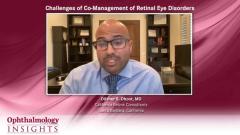
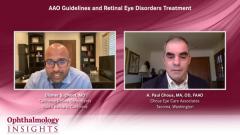
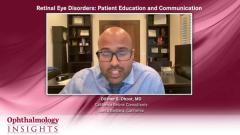
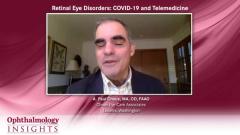
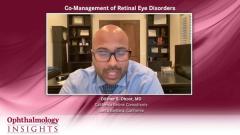
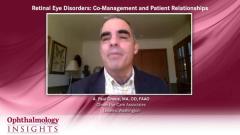


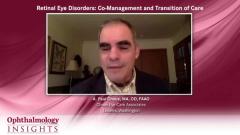
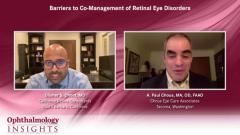














































.png)


